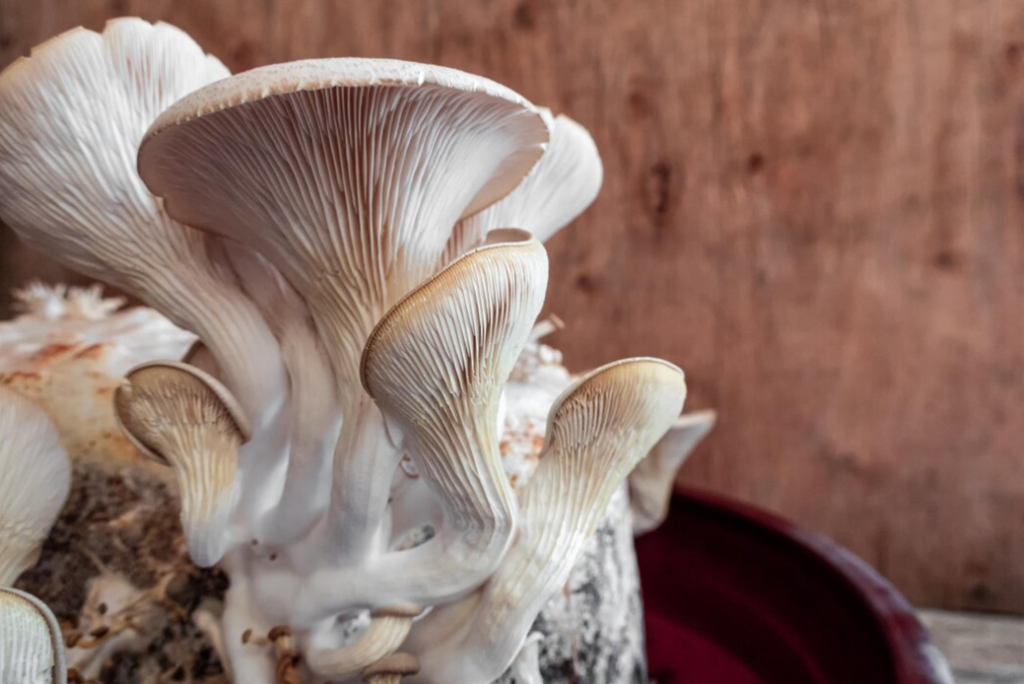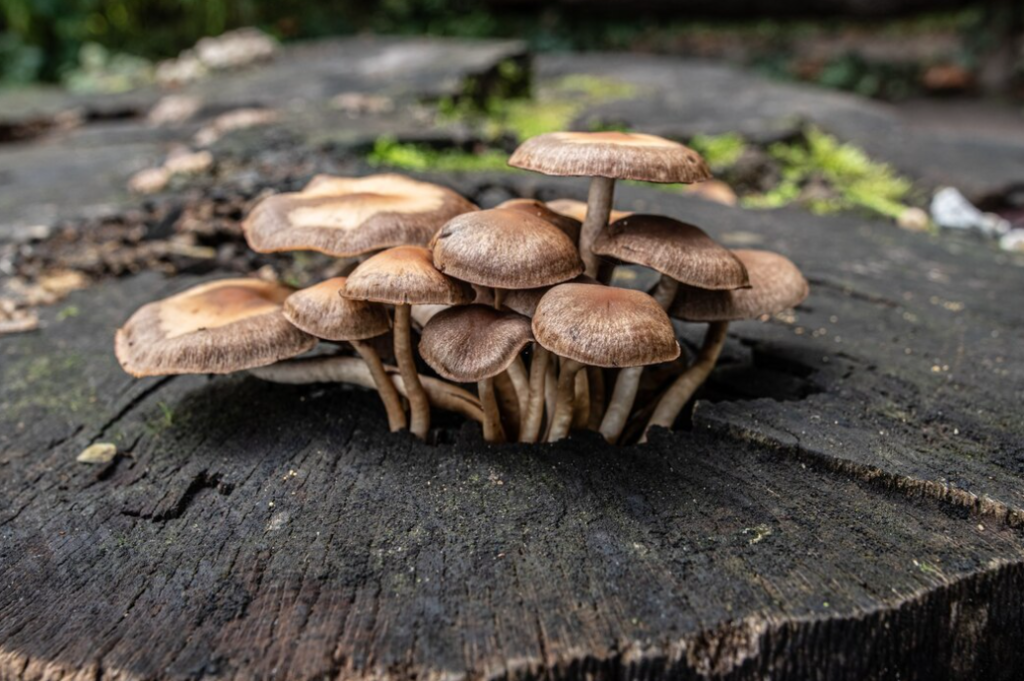Fungi, a diverse and fascinating group of organisms, play crucial roles in nutrient cycling, decomposer networks, and even human health. From the yeast in your bread to the mushrooms in the woods, understanding the structure of fungi provides insights into their varied functions and ecological roles.
The Basic Cellular Organization
Fungi belong to the kingdom of eukaryotes, distinguished by their sophisticated and organized cellular composition. At the core of this organization is the nucleus, which houses their genetic material and acts as a control center for the cell. Surrounding the nucleus are vital organelles like mitochondria, responsible for energy production and cellular respiration. The endoplasmic reticulum plays a key role in protein synthesis and lipid metabolism, working in tandem with the Golgi apparatus, which modifies, sorts, and packages proteins for transport to various cellular destinations.
Another noteworthy characteristic of fungi is their multicellular nature, with cells working together in a coordinated manner to ensure the organism’s growth, survival, and reproduction. However, there are exceptions within the fungal kingdom, such as yeasts. Yeasts stand out due to their unicellular form, yet they perform many of the same functions as their multicellular counterparts. Understanding this cellular foundation is pivotal to comprehending the biology and functionality of fungi in broader ecological and biological contexts.
Hyphal Structure and Growth
At the heart of fungal growth and spread lies the mycelium, often likened to an underground web or a branching tree of filaments. This dense mat consists of individual threads known as hyphae. These hyphae, resembling thin threads, function as the primary mode of nutrient absorption and growth for the fungus. They grow directionally, typically at their tips, allowing them to explore new territories and access nutrients. As they grow, they branch out in various patterns, forming complex and often expansive networks that can cover vast areas, especially visible when one observes mold growth on a substrate or when considering the massive mycelial networks present in forest floors.
Diving deeper into the structural intricacies of hyphae, there are mainly two types:
- Septate Hyphae: These hyphae are compartmentalized by internal cross-walls known as septa. Despite these divisions, cytoplasmic streaming can still occur between compartments, allowing for the transport of nutrients, organelles, and sometimes even nuclei. Each compartment, bound by its own set of septa, can house one or more nuclei, depending on the species and growth stage;
- Coenocytic Hyphae: On the contrary, coenocytic hyphae present an uninterrupted, open cellular structure. Here, multiple nuclei float freely within a single, elongated cellular space. The absence of septa gives these hyphae a continuous appearance, and they can often be found in specific fungal groups, showcasing their unique evolutionary adaptations.

Reproductive Structures
Fungi, with their myriad of forms and functions, exhibit a fascinating array of reproductive strategies. Their capacity to reproduce both sexually and asexually underscores their adaptability, allowing them to thrive in varying conditions and ensuring the continuation of their species across diverse environments.
| Reproduction Type | Structure | Description |
|---|---|---|
| Asexual | Sporangia | Spherical structures housing spores. They rupture upon maturity to release spores for germination. |
| Conidia | Free spores developing on hyphae tips or sides. Released in large numbers for enhanced colonization chances. | |
| Sexual | Ascocarps | Fruiting bodies in ascomycetes. House asci where meiosis forms ascospores, which are then released. |
| Basidiocarps | Typical mushroom structures by basidiomycetes. Bear basidia where meiosis forms basidiospores for dispersal. |
Asexual Reproduction:
Asexual reproduction is typically a quicker, direct method of producing offspring without the fusion of genetic materials from two parents. In fungi, this often involves the formation of spores, which are tiny, resistant structures capable of developing into a new organism. Two primary structures involved in asexual reproduction are:
- Sporangia: These are small, typically spherical structures that house and protect developing spores. Once the spores inside the sporangium mature, the sporangium will rupture, releasing them into the environment where they can germinate and establish a new fungal colony;
- Conidia: Contrary to sporangia-encased spores, conidia are free spores that develop on the tips or sides of specific hyphae called conidiophores. They are often released in large numbers, enhancing the chances of colonization in new locations.
Sexual Reproduction:
Sexual reproduction in fungi involves the fusion of specialized sexual structures, leading to the combination of genetic material from two parent fungi. This genetic mingling enhances genetic diversity, offering better adaptability to changing environments. Key structures in this reproductive method include:
- Ascocarps: Exclusively produced by fungi belonging to the ascomycetes group, ascocarps are fruiting bodies that house the asci. Within these asci, a special type of nuclear fusion and cell division called meiosis occurs, leading to the formation of ascospores. Once mature, these spores are released to give rise to a new generation of fungi;
- Basidiocarps: Familiar to many as the typical mushroom structure, basidiocarps are produced by basidiomycetes. On the underside of the cap, typically on gills or similar structures, are specialized cells called basidia. It is here that meiosis takes place, resulting in the formation of basidiospores. Upon maturity, these spores are dispersed, often by wind or animals, to potentially colonize new areas.
The Fungal Cell Wall: Composition and Function
Fungi are renowned for their unique and resilient cellular structures, and central to this uniqueness is the fungal cell wall. This robust barrier acts as the frontline of defense against external threats and as a support system, ensuring the cell maintains its integrity and shape.
Composition:
While many organisms, including plants, have cell walls, what sets fungi apart is the primary material that constitutes their walls.
- Chitin: Unlike plants that predominantly use cellulose, fungi use chitin as the main building block for their cell walls. Chitin is a complex carbohydrate, or more precisely, a polymer of N-acetylglucosamine. This compound provides the rigidity and toughness necessary for fungi to withstand various environmental pressures. In the animal kingdom, chitin is also found in the exoskeletons of insects and other arthropods, underlining its importance as a robust structural material;
- Polysaccharides: In addition to chitin, fungal cell walls are enriched with a variety of polysaccharides. These complex sugars play roles in maintaining the cell’s osmotic balance, structural integrity, and facilitating interaction with the environment;
- Proteins: Embedded within the carbohydrate matrix of the fungal cell wall are various proteins. These proteins can serve a myriad of functions ranging from structural support to enzymatic activities or even interactions with host organisms in cases of pathogenic fungi.
Function:
The fungal cell wall is not just a static barrier but a dynamic interface between the fungus and its environment. Here are its primary functions:
- Protection: The cell wall safeguards the internal components of the fungal cell from external adversities such as desiccation, mechanical damage, or predatory organisms;
- Shape and Support: Providing rigidity, the cell wall ensures that the fungal cell maintains its shape. This is crucial for the growth and branching of hyphae, especially when they penetrate substrates or grow in challenging terrains;
- Mediation of Interactions: The cell wall plays a crucial role in how fungi interact with their environment, be it anchoring the fungus to a substrate, interacting with other organisms, or responding to environmental cues. In some pathogenic fungi, the cell wall components can be recognized by host defenses, triggering immune responses.
Differentiation and Complex Structures

Fungi, though often considered simple organisms, possess a remarkable ability to differentiate and form intricate structures based on their environmental needs and life cycle stages. This capacity to develop specialized structures not only showcases their evolutionary adaptability but also emphasizes their role in diverse ecosystems.
Stromata:
- Stromata, or the plural form ‘stroma,’ represent dense, compact masses of mycelium. These structures can be perceived as the ‘foundations’ on which more elaborate structures, such as fruiting bodies or spore-producing apparatus, are built. Stromata serve multiple purposes;
- Support: They provide a sturdy platform for the development of reproductive structures, ensuring they are raised above their substrate for efficient spore dispersal;
- Nutrient Storage: The dense mycelial mass acts as a reservoir of nutrients, supplying the necessary resources for the development of spore-producing structures during reproduction;
- Protection: In some fungi, the stromata can encase and protect the developing reproductive structures from environmental adversities, ensuring their survival until they are mature and ready for dispersal.
Rhizomorphs:
- Rhizomorphs resemble root-like bundles of hyphae. These structures are more than just aggregates; they are highly organized and differentiated. Their main functions include;
- Nutrient Transport: Rhizomorphs can traverse considerable distances, channeling water and nutrients from remote sources to parts of the fungal organism that need them. This ability is especially crucial for mycorrhizal fungi, which form symbiotic relationships with plants;
- Colonization: By extending across substrates, rhizomorphs can help fungi colonize new territories, acting as exploration frontiers.
Sclerotia:
- Sclerotia are hardened, resilient masses of mycelium, often found in the soil or within host tissues. Their primary purpose is survival, and they exhibit several characteristics;
- Resistance: Sclerotia are equipped to endure extreme environmental conditions, be it desiccation, cold, or even the absence of nutrients;
- Longevity: They can remain dormant for extended periods, waiting for conditions to become favorable for growth;
- Regeneration: Once conditions improve, sclerotia can germinate, giving rise to new mycelial growth or directly producing reproductive structures, thereby ensuring the continuation of the fungal species.
Conclusion
Fungi are versatile and complex organisms. Their structures, ranging from simple hyphae to intricate fruiting bodies, enable them to thrive in diverse environments and play pivotal roles in ecosystems. By understanding the structure of fungi, we gain a deeper appreciation for their ecological importance and potential applications in biotechnology and medicine. While delving into the intriguing structures of fungi and their ecological significance, you may also like to explore our in-depth article, ‘Asexual vs. Sexual: How Fungi Ensure Their Continuity,’ to gain a deeper understanding of their reproductive strategies.

